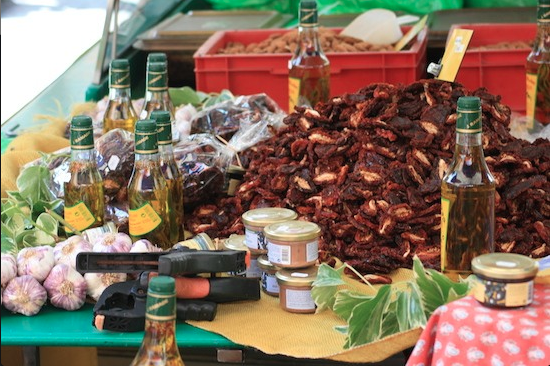The word is known: terroir. It has become familiar in English, borrowed from French instead of translated. The word means soil or land. To discuss the terroir of a region, of a plot of land, imbues the subject with meaning and history: terroir is tradition.
Terroir isn’t about being close to where your food grows as a consumer but rather describes the experience of place. It describes the taste of a place. Understanding it comes from the experience of being from and living somewhere. There is an understanding in France that specific foods come from particular places. Every other item in a market is a produit du terroir, de somewhere: poulet de Brest, fleur de sel de Guerande, crottin de Chavignol, and so on. Terroir also points to an obsession with authenticity and tradition—one could argue that the worst of French nationalism and identity expresses itself in terroir. Indeed, exclusion and tradition are both part of its usage in France.
Yet the term also values the communities and weathered rhythms of a place in a more general sense. Food and people come from somewhere: both are rooted. This, the understanding that food and eating are basic and essential to how we inhabit the world—that personality and society are connected to the land and what it produces—is where terroir pulls me in. Dany Laferrière illustrates this aspect of terroir in his novel Pays sans chapeau. The work is fiction and autobiography, part memory and part story. In it, the narrator returns home to Port-au-Prince after twenty years living in Montreal. The city is in disarray, grappling with political instability and violence. He returns to his mother’s house, where the most vivid scenes and memories occur over plates of shared food.
***
On spaghetti
I knew this question would come, sooner or later.
“What did you eat for the past twenty years?” my mother asked, point-blank.
“Marie, I can’t take it when you say ‘twenty years,’ it breaks my heart.”
“But Renée, he spent twenty years over there.”
“I know.”
“What did I eat?”
To understand the importance of this question, know that food is crucial in my family. To feed someone is a way of saying I love you. For my mother, it is almost her only means of communication.
“How did you get by?”
“On spaghetti.”
Language
I dive, headfirst, into this sea of familiar sounds. A familiar tune that we hum easily, even if it has been a while since we heard the song. A rush of words, of rhythms in my head. I swim without effort. Liquid speech. I do not seek to understand. My spirit finally rests. One could say the words had been chewed before they were served to me. No bones. The gestures, the sounds, the rhythms, it all is part of my flesh. The silence too.
I am home, that is to say in my language.
Carrot
“Have some more carrots, Old Bone.”
“They’re good for your eyes…”
“Oh, you remember,” says my mother, almost with tears in her eyes.
“Of course mom, it made an impression. And I still hate carrots.”
“So then why did you ask me?”
“Simply to hear you say that carrots are good for eyes.”
The meal
Like always, my mother made a simple meal, light and delicious: white rice, chicken with merleton and fried bananas. Salad: avocado and tomato. For dessert, it will be potato bread.
She sits down across from us.
“Have some more chicken, Philippe.”
She puts more rice on my plate when she decides there isn’t enough.
“Thank you… I very much like this meal,” says Philippe.
My mother smiles. Are we in 1976 or 1996?
***
In these scenes, food is the foundation of the narrator’s relationship to home, to his mother. Eating indicates both what they share and the time elapsed since Laferrière’s departure from Haiti. When he returns, the dinner is de her kitchen in Port-au-Prince. They don’t focus on the authenticity of products, but on the fact of eating their food together. These scenes illustrate the appeal of terroir, of admitting “that eating takes place inescapably in the world,” as Wendell Berry writes in his essay, “The Pleasures of Eating.” Berry focuses on how we eat as integral to how we live, on the experience of eating as built into the experience of place. This way of describing terroir, as a way to think about eating and acknowledge its networks through the world, begins to break down the French way. The exchanges Laferrière has with his mother are simple and short, but they express fully how food marks the space they share together and their time apart: his spaghetti is lonely, the carrots are tender, the potato bread he can predict for dessert is filling. His mother’s cooking evokes their shared experience of a place, of home. They share the pleasures of eating, inescapably, in the world.
***
Nina Sparling is a recent graduate of Sarah Lawrence College, where she studied food politics and comparative literature. Currently she works as a cheesemonger in Brooklyn and interns for New Vessel Press. Her blog, The Analog Kitchen, hopes to offer a kind of cooking that responds to place and memory as much as to proportion.

